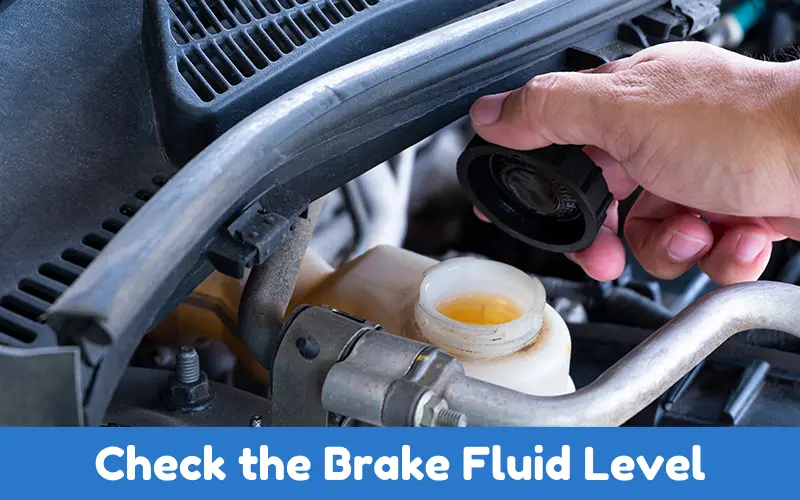When it comes to the braking system of your vehicle, bleeding the brakes is something that you should know how to do. It keeps you safe on the road.
If your car has an Antilock Braking System (ABS), there are a few more steps to follow when bleeding brakes with ABS.
Bleeding brakes properly with an ABS does take a little more care than if your vehicle isn’t so equipped. The process of bleeding brakes with ABS car is not complex, so let’s get started.
Topic Summary
Why Bleed Your Brakes With ABS?
It is essential to bleed ABS brake fluid now and again to ensure that the brakes are working properly and to avoid safety and performance issues.
The brake fluid can collect air within the brake lines, particularly when parts like calipers and servos are replaced or if the fluid level becomes low, causing a spongy brake pedal when you apply the brakes.
Bleed your brakes will cause the brakes to be less efficient, and it will increase the distances needed to bring the car to a stop.
Air pressure can enter the brake lines over time. This compromises the efficiency of your stop and go gadget, making your shoes feel spongy and rather dull. To eliminate this air, his car will be bled.
But if you have to do it on a car with ABS, you have to be even nicer to the brakes because you could compromise the entire anti lock braking system and subsequently cause the vehicle to fail to stop in an emergency due to air in the brake lines.
If you’re using old or dirty brake fluid, you could also cause the ABS module to fail or cause braking inconsistency.
As with any other brake system, it should include regular bleeding of ABS brakes (it is like mini bleeding of the primary brake circuit).
This will keep the brake fluid clean and free of air bubbles and ensure that the braking forces you depend on when you step on the brakes are the same ones your passengers are counting on.
How To Bleed The ABS Module?
In bleeding, one drains the air out and replaces old humor with a new one. However, it had to be new because polluted humor, having absorbed the moisture of the air, lost its boiling points.
Equipments You’ll Need
Before you begin, gather the necessary tools:
- A wrench set
- A brake fluid reservoir (appropriate for your vehicle)
- A clear plastic tube
- A brake bleeder kit (optional but recommended)
- Jack and Jack stand.
- Safety gloves and goggles
- A helper (if possible)
Safety Preparation
- Prepare Your Vehicle
- Park your vehicle on a flat, stable surface and engage the parking brake.
- Use a jack to lift the car and secure it with jack stands.
- Ensure the engine is off and the keys are out of the ignition.
- Wear safety gloves and goggles to protect yourself from brake fluid, which is corrosive.
1. Check The Brake Fluid Level
Find the brake fluid reservoir under the hood. It will be at the rear of the engine compartment, usually on the driver’s side.

Check to see if the brake fluid level is where it should be, and add some if it’s not. Use the type of brake fluid recommended for your car.
2. Locate the Brake Bleeder Valves
Look for the bleeder valves. They are located at the rear of each of the brake calipers, towards the top.
Work your way from the brake farthest from the master cylinder (usually the rear passenger side), attaching the clear plastic tube to the bleeder valve with the other end in the container to catch the old fluid.
3. Bleeding the Brakes Manually
If You’re Using a Helper:
- Get your helper in the driver’s seat and have them depress the brake pedal several times before holding it down.
- Keep the pedal depressed after the wheel has been bled and the pressure is wiped off the compressed tube. Then, taking a wrench, slightly open the bleeder valve. You want to see the fluid (and hopefully air bubbles) flow through the tube.
- When the flow diminishes, tighten the valve and ask your helper to take off the brake pedal.
- Repeat this process until no air bubbles are visible in the fluid.
If You’re Working Alone:
- A brake bleeder kit, however, will allow you to bleed the brakes all by yourself. Simply follow the instructions that come with it.
- It’s the same procedure as manual bleeding, but one can control the bleeding of the brake easily with just one person, without leaning over the car.
4. Repeat for Each Brake
Now go to the next furthest brake from the master and repeat the same bleed.
The expected order is a curb-side rear, driver’s side rear, curb-side front, and driver’s side front.
5. Check Brake Fluid Levels Regularly
Having bled each wheel brake with a piston stopper in it, you can check the level of the brake fluid at the reservoir and fill it up if it requires it before literally running the reservoir dry.
6. Test the Brakes
Once all the brakes have been bled, lower the car back to the ground.
If you’re about to drive the car, test the brake pedal too. It should be tough and snappy and stay that way. Spongy? Start bleeding all over again.
7. Dispose of Old Brake Fluid Properly
Brake fluid is toxic and should be disposed of according to local regulations. Don’t throw it down the drain or in the trash.
How Do You Flush A Brake System with ABS?
Flushing the brakes with ABS ensures that this old, contaminated brake fluid is removed from the system and replaced with fresh fluid to keep you stopping as intended. Here’s how:
Gather Tools: New brake fluid, a wrench, a clear tube, and a brake bleeding kit.
Prep the Vehicle: Before you get started, you need to prepare your vehicle. Put it on jack stands and make sure the engine is off. Prepping the Vehicle. Place the car on jack stands and turn the engine off.
Drain Old Fluid: Pull out the old fluid with a turkey baster or similar contraption and fill it up with new brake fluid.
Bleed Brakes: Working from the brake furthest from the master cylinder, attach the clear tube to the bleeder valve and have your helper pump the brake pedal a few times to repressurize the system.
Then, hold the pedal down as you open the valve, slowly releasing old fluid from the system. Close the valve and repeat until fresh fluid emerges.
Repeat & Refill: Continue the process for each brake, checking and refilling the reservoir frequently.
This process ensures a complete flush and removes air bubbles for reliable braking.
How To Maintain Your ABS Brake System?
Miantaing your ABS brake system is a must for your vehicle. So, follow the following tips to maintain bleeding brakes with ABS.
Regular Brake Fluid Check
Check brake fluid level/quality periodically. Brake fluid takes up moisture over time and causes corrosion of the brake system, which reduces the effectiveness of your ABS.
Add or change the recommended brake fluid for your vehicle.
Routine Brake Inspections
Get the system checked prior to your trip. Make sure your brakes are all in good order, including the brake pads, rotors, and ABS components.

It’s always a good idea to address wear and tear before it gets serious, and that way, you’ll be sure your ABS works properly during an emergency stop.
Keep Sensors Clean
ABS uses wheel speed sensors as input. Dirt, grime, or corrosion can interfere with the sensors, so cleaning them regularly will ensure that the ABS module receives accurate data.
ABS Module Recall
Many of these vehicles will trap air in the ABS module, which may require you to bleed the system before you reinstall it following repair. Refer to your vehicle shop manual for specific air bleeding instructions, or get a pro to service your vehicle.
Make it Consistent
Make sure you do all the steps, including the final one for air, in the same order each time you flush a toilet. After you finish flushing, check all the bleeder valves to make sure there are no leaks.
Avoid Overheating the Brakes
Brakes and, therefore, brake fluid, can overheat when subjected to prolonged heavy towing or spirited driving. Use engine braking where possible and allow the brakes to cool during long open road descents.
If you follow our recommended preventive tips, your ABS will continue to work properly, and your car’s braking performance will be as good as new.
FAQs on Bleeding Brakes with ABS
Can I Bleed the Brakes on My ABS Equipped Vehicle?
Yes, you can perform the brake bleed on any ABS equipped vehicle with just a few standard diagnostic and hand tools. A few more complicated ABS systems have a special procedure for bleeding the ABS module, which requires a scan tool and refer to your service information.
What Brake Fluid Should I Use When Bleeding Brakes?
Use only the type of brake fluid recommended in your owner’s manual (this will often be DOT 3, DOT 4, or DOT 5.1), and never mix the various grades.
How Do I Know If My Brakes Need Bleeding?
Symptoms of a brake bleed include a spongy (soft) brake pedal, longer stopping distances, or your brake pedal going to the floor with no resistance. If you experience any of these symptoms, it’s time to bleed a brake.
Can I Drive Immediately After Bleeding the Brakes?
Yes, if you have bled the brakes the proper way and if the brake pedal feels firm, you can drive your vehicle, but better you test the brakes in a safe, controlled area before you drive it on the public road.
How Often Should I Bleed My Brakes?
Brake bleeding should be performed every two to three years or following routine brake service. Still, if you have any symptoms of poor brake performance if you frequently use your brakes in a high demand situation, such as racing, or if you often tow something, you may need to perform it more often.
End Note
If you’re careful, bleeding brakes with ABS can be an essential project that you nurture into fruition.
Although it might look intimidating to those who haven’t done it before, the result can be supremely satisfying, and the risk isn’t as high as you might think.
Make sure your brakes are good for years of safe driving by doing it right the first time, and if you’re ever in doubt, make sure to take your vehicle to a professional mechanic to get it patched up.

